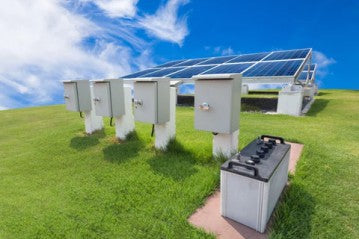
Charging lithium-ion batteries with solar panels offers a sustainable and cost-effective solution for powering our devices and appliances. Not only does it reduce our carbon footprint, but it also provides energy independence. To ensure optimal performance and maximize the lifespan of your lithium-ion battery, it is crucial to follow a systematic approach for charging with solar panels. In this article, we will outline the key steps involved in this process and provide practical tips for efficient charging.
I. Sizing and Selecting the Solar Panel System
Before diving into the installation process, it's essential to properly size and select the solar panel system for your lithium-ion battery. Here's how to do it:
1. Calculating the power requirements
To determine the battery capacity and voltage requirements, consider the devices you intend to power. Assess their energy consumption and estimate the daily energy usage. This will help you determine the capacity of the battery needed to sustain your needs.
2. Assessing the solar panel capacity
Location, tilt angle, and shading are important factors to consider when sizing your solar panel system. Assess the amount of sunlight available in your area and calculate the panel capacity required to meet the energy needs of your battery. It's crucial to ensure that the solar panel capacity matches the energy requirements of the battery.
3. Choosing the appropriate solar charge controller
Solar charge controllers regulate the charging process, preventing overcharging and over-discharging. Select a charge controller that matches the system voltage and charging requirements of your lithium-ion battery. This ensures efficient and safe charging, maximizing the battery's lifespan.
II. Implementing the Charging Process
Once you have sized and selected your solar panel system, it's time to implement the charging process. Follow these steps for a successful installation:
1. Installing and positioning the solar panels
Determine the optimal location and angle for your solar panels to maximize sunlight exposure. Keep in mind that panels should be installed where they receive the most direct sunlight throughout the day. Securely mount the panels on rooftops, poles, or ground-mounted racks for optimal performance.
2. Wiring and connecting the solar panels to the charge controller
Use appropriate cables and connectors to ensure efficient power transfer from the solar panels to the charge controller. It's important to follow the manufacturer's guidelines for proper wiring and connection. Additionally, ensure proper grounding and implement protection against overvoltage to safeguard your battery and equipment.
3. Monitoring and maintaining the charging system
Regularly monitor the battery voltage and charging current to ensure the system is operating optimally. Make adjustments as necessary to maximize efficiency. Inspect and clean the solar panels regularly to remove any dirt or debris that may reduce their performance. Implement preventive maintenance practices to extend the lifespan of your battery.
III. Conclusion
Charging lithium-ion batteries with solar panels offers numerous benefits, including environmental sustainability and energy independence. By following the steps outlined in this article, you can ensure efficient charging and maximize the lifespan of your battery. Remember to properly size and select your solar panel system, install and position the panels correctly, and maintain the system regularly.
At Ecgsolax, we understand that the heart of any solar power system lies in the quality of its solar batteries . That's why we are dedicated to manufacturing high-performance solar batteries that deliver exceptional power output and durability. Our meticulously engineered solar cells are designed to capture sunlight efficiently, allowing you to generate clean energy for your residential, commercial, or industrial needs.
So, why wait?
If you have any questions about our solar batteries or other products, don’t hesitate to contact us. We’d love to discuss your solar power needs and help you make an informed decision.
Related articles: How To Choose LiFePO4 Batteries? 2023 Guide

0 comments